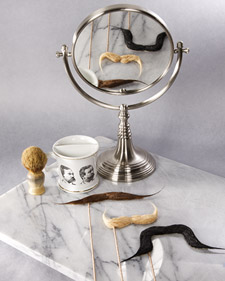 She made me an offer I couldn't refuse...
She made me an offer I couldn't refuse...The Grungy Bat King will be ruling the roost
in his new Southern California castle. Another
Plumpkin will be up for adoption tomorrow
evening on eBay.
 She made me an offer I couldn't refuse...
She made me an offer I couldn't refuse...
 This week's Art on the Darkside Challenge: Puppeteer.
This week's Art on the Darkside Challenge: Puppeteer. A most wonderful friend is building my dress (haven't we talked about that yet? Only in white?), and today she brought in the corset!
A most wonderful friend is building my dress (haven't we talked about that yet? Only in white?), and today she brought in the corset!
 If you find yourself in L.A. in June, there is a competition at IMATS (International Make-up Artists Trade Show) and the Fantasy/Beauty theme is gothic make-up.
If you find yourself in L.A. in June, there is a competition at IMATS (International Make-up Artists Trade Show) and the Fantasy/Beauty theme is gothic make-up.
Then, I realized something. It was mid-October. Summer was over. I was now the only person still spending time on the deck. The cat and I. Maybe I didn't have to do anything right away. And so the paint splatters went ignored and thankfully unnoticed throughout the remaining fall and winter months. Periodically, I found myself hoping the cold might freeze them off. Or perhaps the blowing snow and freezing rain might deliver a sand-blasting effect to the back of my house. But no.



 All work and no play makes Melissa a
All work and no play makes Melissa a Thanks to Take Charge of Your Wardrobe, I finally see the possibilities of this cape from Fitzpatterns. Every other time I've been to their page of free patterns I have overlooked it.
Thanks to Take Charge of Your Wardrobe, I finally see the possibilities of this cape from Fitzpatterns. Every other time I've been to their page of free patterns I have overlooked it.
 Fun in the Making has got to be one of the best names I've ever heard for a crafty blog.
Fun in the Making has got to be one of the best names I've ever heard for a crafty blog.
 And replace those pink flowers with this adorable little creature:
And replace those pink flowers with this adorable little creature:
And I think we might have a winning plan for a wedding cake.
Also, I think this is the first blog I've posted that my Mom has read. She's standing over me right now reading this. Weird.
Mom, don't take this too literally. No final decisions have been made tonight. ;-) Love you!
(additionally, she didn't realize my smiley face was winking -- so much to learn about the internets)


 There was a time when I referred to Martha Stewart only as "The Devil."
There was a time when I referred to Martha Stewart only as "The Devil."


 My friend Joe would really hate this lamp. I think he's genuinely terrified of being abducted by aliens.
My friend Joe would really hate this lamp. I think he's genuinely terrified of being abducted by aliens. Think they would fire me if I printed these out and put them up around my cubicle?
Think they would fire me if I printed these out and put them up around my cubicle?

 So that sucked, but I'm moving onward and upward in my quest for brilliant Hallowedding music. I'm already considering phonograph recordings as the ambient music before the ceremony (so beautifully creepy).
So that sucked, but I'm moving onward and upward in my quest for brilliant Hallowedding music. I'm already considering phonograph recordings as the ambient music before the ceremony (so beautifully creepy). **Vintage images by Kelly Burton's Collagevision: http://www.etsy.com/shop.php?user_id=5945339
**Vintage images by Kelly Burton's Collagevision: http://www.etsy.com/shop.php?user_id=5945339

 |
| Awarded to Dana, May 2009 From She Walks Softly |
Planet Halloween. Copyright 2011 All Rights Reserved Free Wordpress Templates by Brian Gardner Blogger Templates presents HD TV Fringe Streaming. Featured on Wedding Photographers Singapore.
